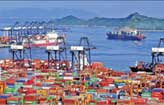Flattop comes with benefits
Updated: 2011-08-19 10:55
By Wang Baokun (China Daily European Weekly)
China has developed its first aircraft carrier by refitting Varyag, an old Soviet aircraft carrier. But it has left some people worried whether the country's economic growth will continue to be strong enough to support the building of aircraft carriers in the future and whether such a move will create enough economic benefit.
An aircraft carrier reflects a country's economic strength, technological development level and equipment manufacturing capacity. The cost of building an aircraft carrier depends on factors such as its quality, standard and design, the level of technical research and development and labor cost. It also depends on the era, manufacturing period and a country's economic and industrial development levels.
International practice shows that building aircraft carriers imposes a rather high demand on a country's economy. For example, a United States Nimitz-class aircraft carrier costs about $4.5 billion. The maintenance cost during its 50-year service is about $12 billion, and the cost of fuel, about $6 billion. The maintenance cost of other vessels in an aircraft carrier's formation is about $7 billion, and about $20 billion is needed to replace the shipboards twice. If we take devaluation and technical reform into consideration to be 20 percent of the overall expenditure, the cost of a Nimitz-class aircraft carrier during its 50-year life cycle would be about $60 billion, that is $1.2 billion a year.
The current US navy expenditure is more than $149 billion, with the costs of aircraft carriers being more than $16 billion and maintenance about $4.2 billion.
China paid $20 million to purchase the old Varyag. According to foreign media's estimates, the total cost of a Chinese aircraft carrier, along with its formation ships and including transportation, refitting, equipment loading, operational aircraft, maintenance and disposal after decommissioning would be about $10 billion.
Will such a high military expenditure be a drag on the Chinese economy or not can be evaluated on the basis of two key indicators: whether the proportions of the military budget in GDP and fiscal expenditure are below the generally accepted "safe levels" of 4 percent and 20 percent.
In 2010, China became the second-largest economy in the world with a GDP of $5.98 trillion. As the largest economy in the world, the US' GDP that year was $14.62 trillion. According to The Wall Street Journal, the military expenditures of the US and China last year were about $698 billion and $119 billion, which accounted for 4.8 percent and 2.1 percent of their GDP. World Bank figures show that, from 1988 to 2009, the proportion of the US' military expenditure in GDP fluctuated between 3 and 6 percent, while that of China was about 2 percent. And according to data provided in China Statistical Yearbook, the proportion of the country's military expenditure in GDP in the past 10 years was about 1.5 percent, and from 1985 to 2010 the proportion of military expenditure in fiscal expenditure were about 8 percent. On July 8, the US passed its $649 billion defense budget. Adding about $33 billion separate budget for nuclear weapon project and army infrastructural construction, its total military expenditure has reached $682 billion, which accounts for 18 percent of its fiscal expenditure this year.
Considering the rapid growth rate of China's GDP and fiscal revenue, even if the country was to develop three to five aircraft carriers in the next 20 years, its economy will not suffer.
The development of aircraft carriers has a dual impact on a country's economy. On one hand, it involves fiscal expenditure and reduces investment. On the other, it increases investment in the military industry, helps related industries develop faster, promote technical progress, strengthen national security, which is conducive to economic development, and has an overall spillover effect.
Building an aircraft carrier is a multi-tier project and needs enough financial guarantee. And China's rapid economic growth offers more than enough guarantee for the country to develop aircraft carriers. China has the capability to build 300,000-ton ships for civil use and is the biggest shipbuilding country. So it has the monetary potential to venture into aircraft carrier development.
But building an aircraft carrier is a difficult and complicated task, because a flattop has to be attack-resistant, highly combative and environmentally suitable, for which new technology, new materials and the latest know-how are needed. Also needed is the entire nation's high-level technical support.
 |
If China builds an aircraft carrier, it will help upgrade the military industry's technology, and expand the repairing and maintenance industries for flattops. Also, it will directly benefit high-end equipment manufacturing and high-end material industries, and the air-armament and information systems.
Though the conventional dynamic technology industry will be the first to develop, nuclear-power technology for aircraft carriers will be the future trend. The need for special materials to build aircraft carriers will help upgrade that sector of the high-end materials industry. Similarly, the need for acquiring and processing information, operational command and control, and engagement support will boost the information technology sector.
The development of aircraft carriers will drive investment and technology both. And since an aircraft carrier needs huge amounts of high-tech input, it will drive economic growth, too.
The US' Star Wars program (Strategic Defense Initiative) in the 1980s is a good example of what strategic development can do. The program helped develop five high-tech groups and about 80 technologies, about 90 percent of which can be for civil use. The information technology industry developed and expanded on the basis of this program between 1995 and 1997, and contributed about 30 percent of the US' GDP growth. In 1997, it created about 7.4 million jobs and brought considerable commercial benefits.
The Star Wars program has driven the development of aerospace, energy, computer and other technology-intensive industries in the US. And it laid the material and technological foundation of one of the US' golden periods of economic growth.
The author is an associate professor at the Economic Security and National Defense Economy Institute, School of Economics, Renmin University of China.
E-paper

Blue economy gets a lift
Coastal areas of Shandong, Zhejiang and Guangdong to spearhead sector development.
The light touch
Long way to go
Outdoor success
Specials

Star journalist remembered
Friends, colleagues attended a memorial service to pay tribute to veteran reporter Li Xing in US.

Hot pots
Tea-making treasures catch the fancy of connoisseurs as record prices brew up interest

Hear we go
Polish Audiologist helps thousands of Chinese hear for the first time.
